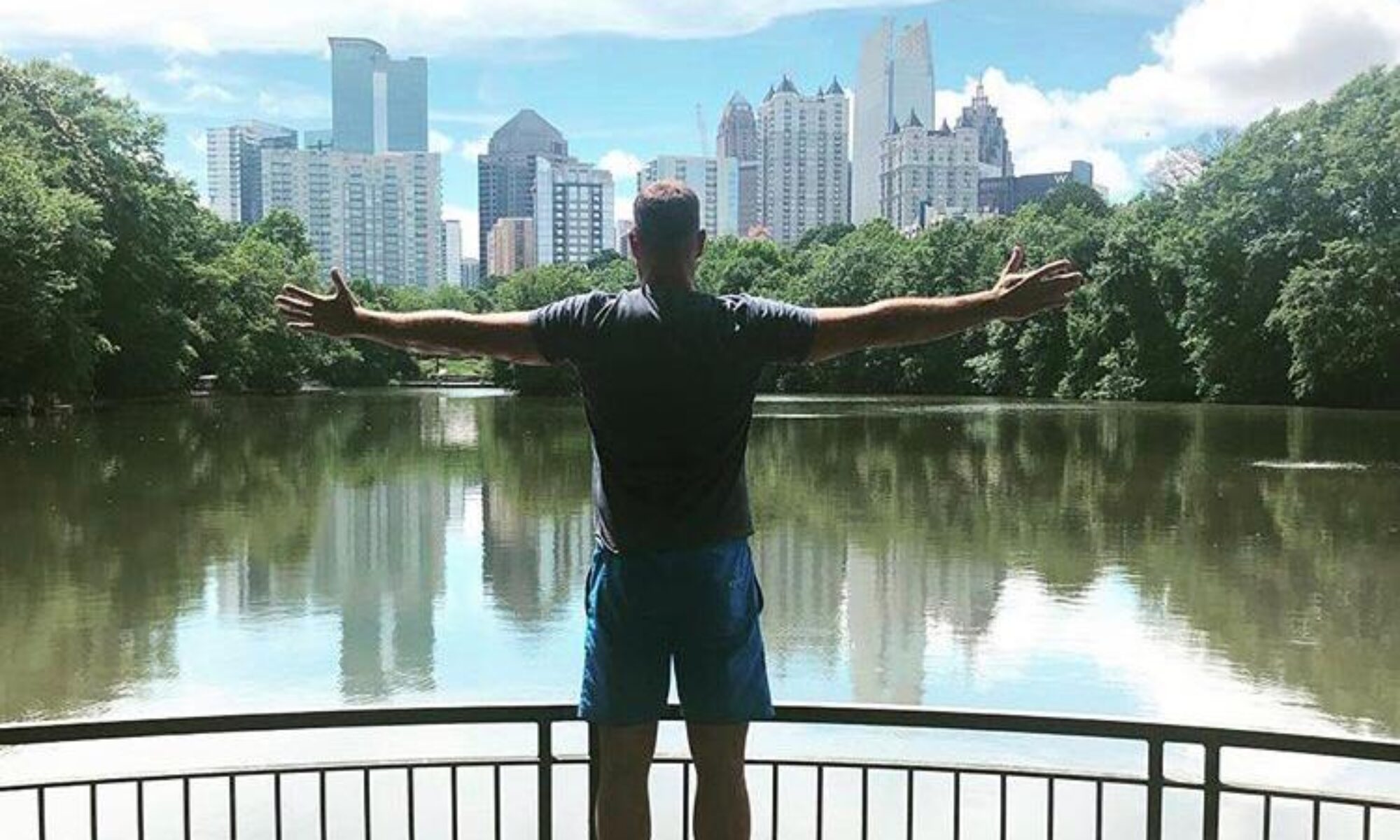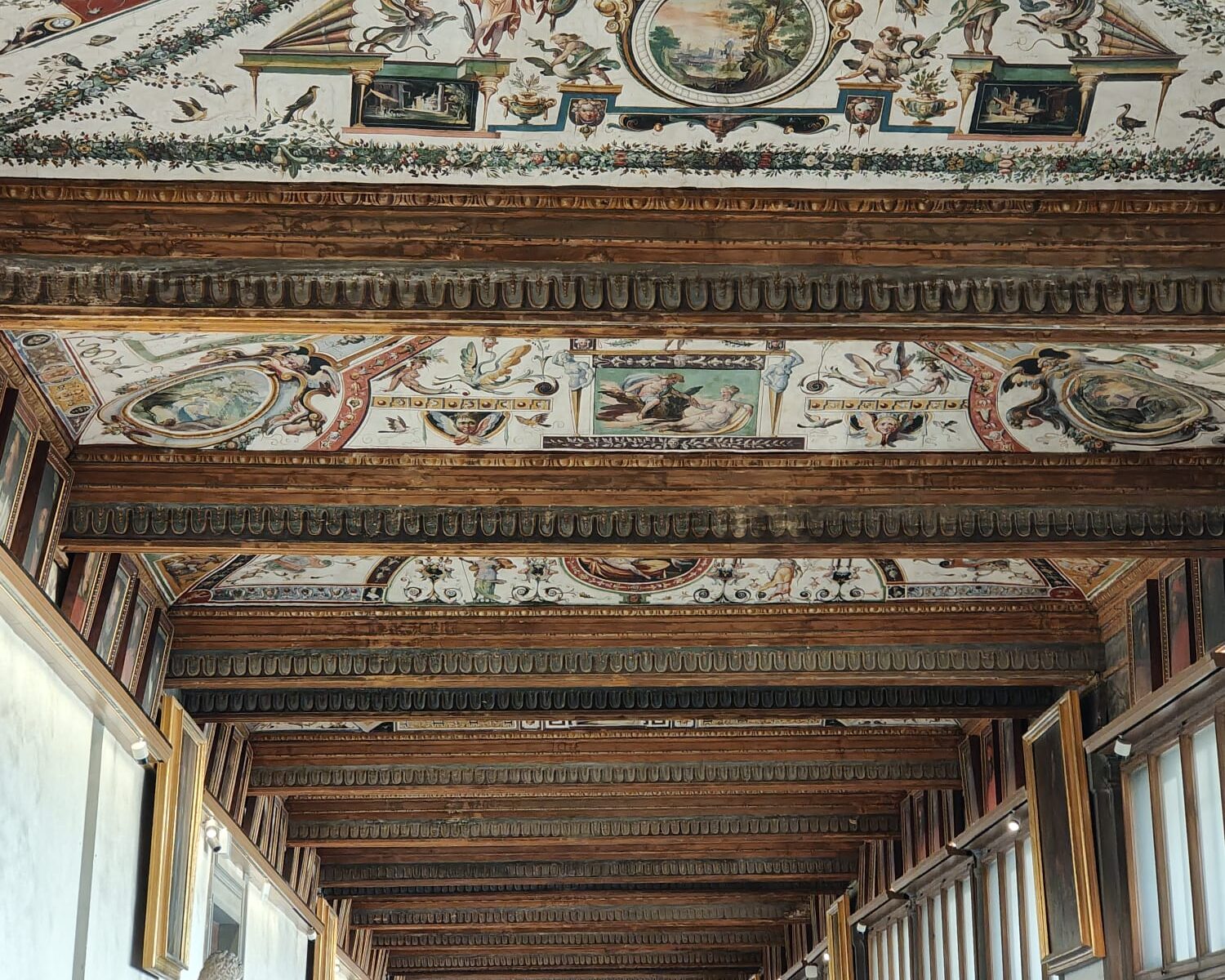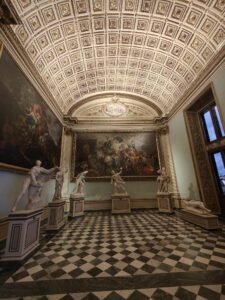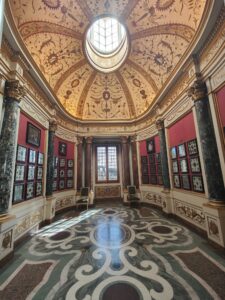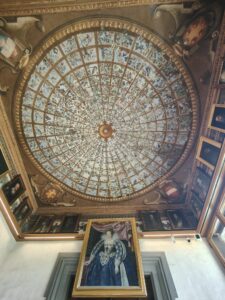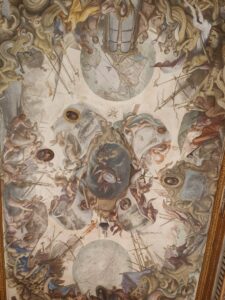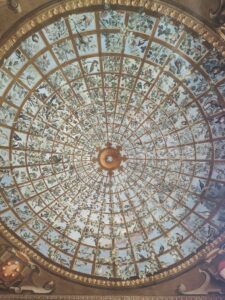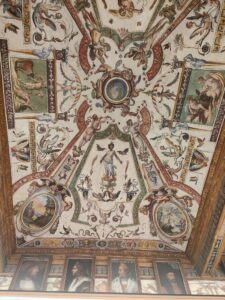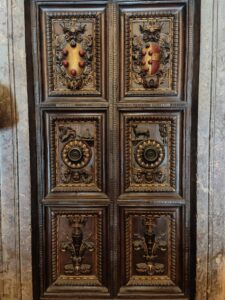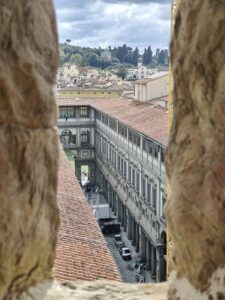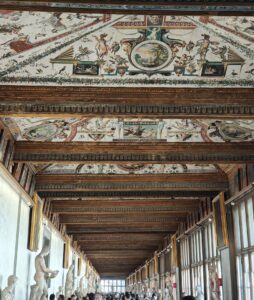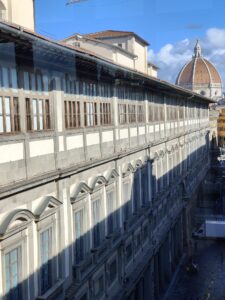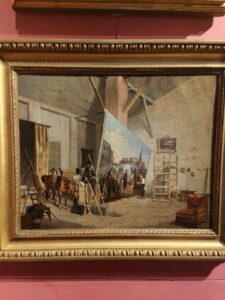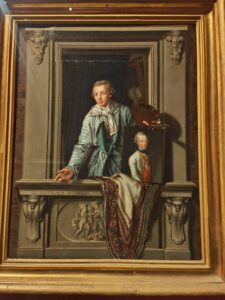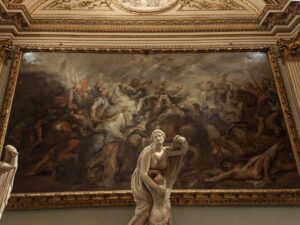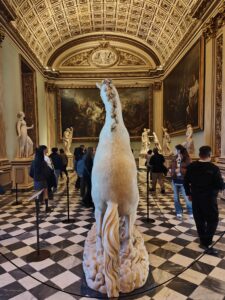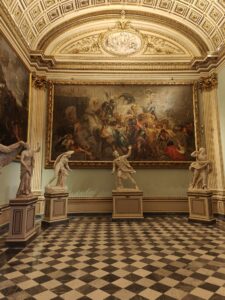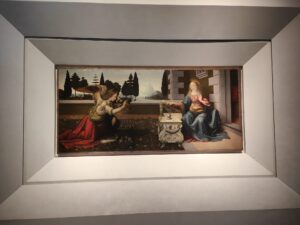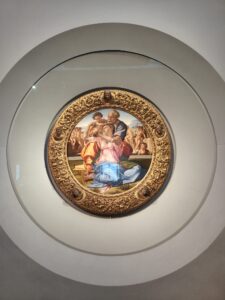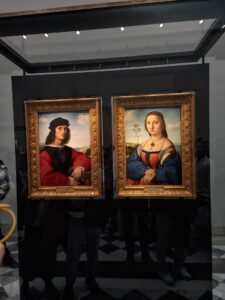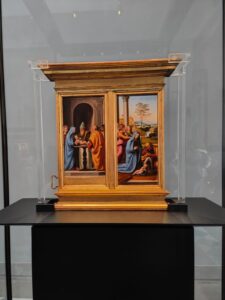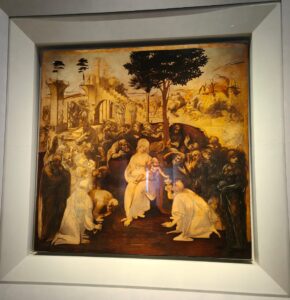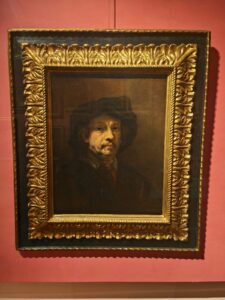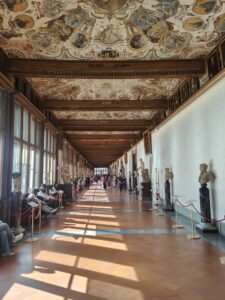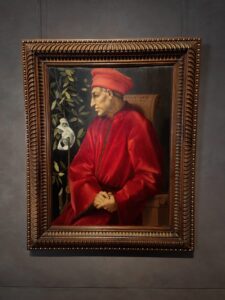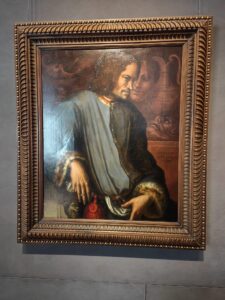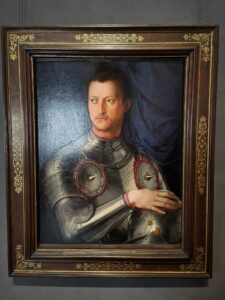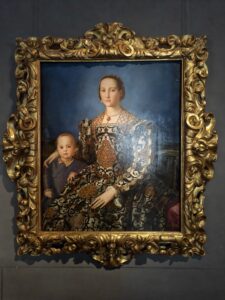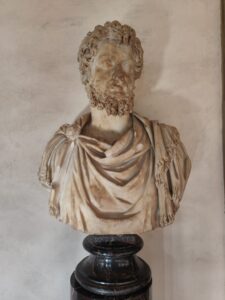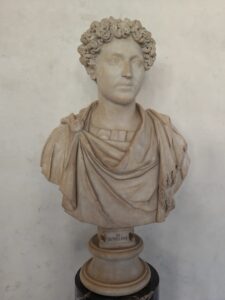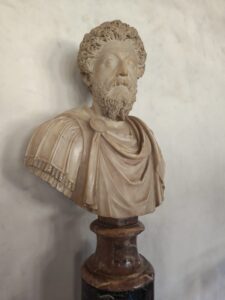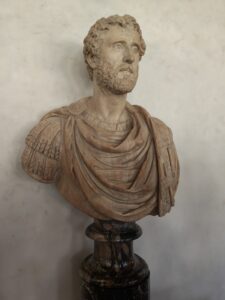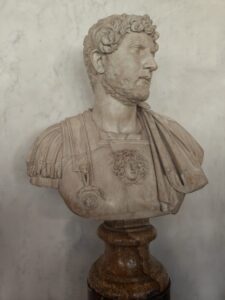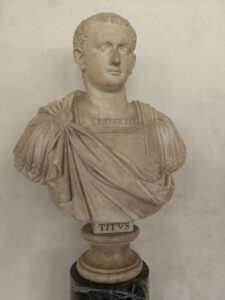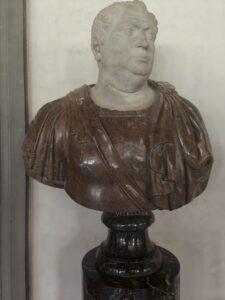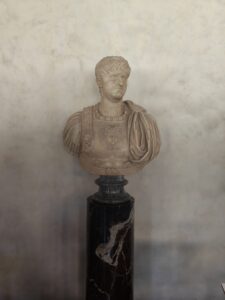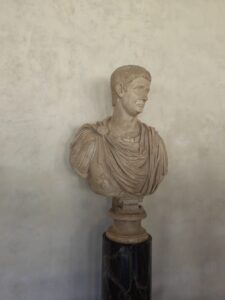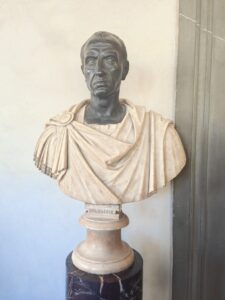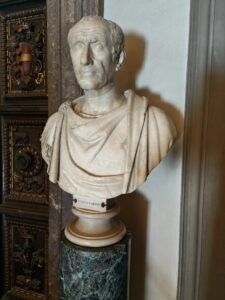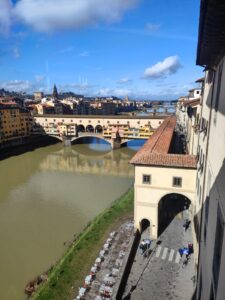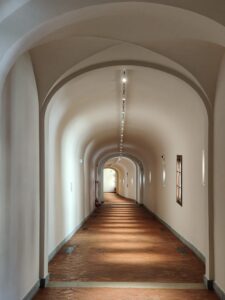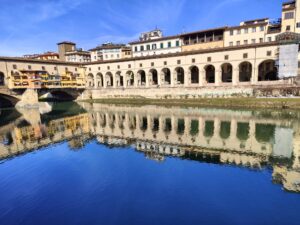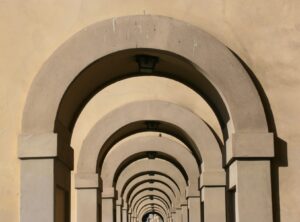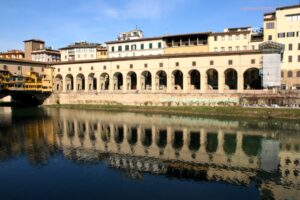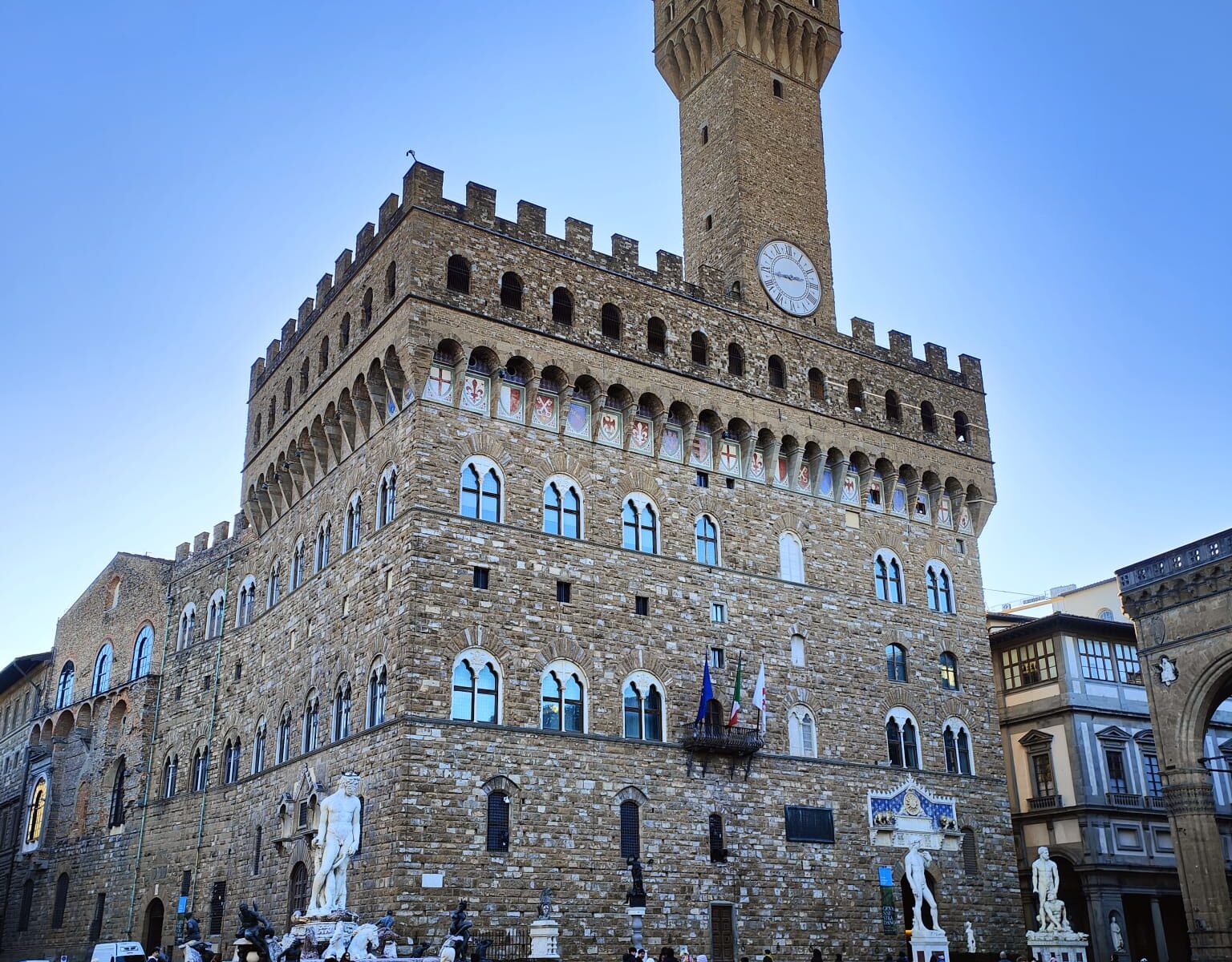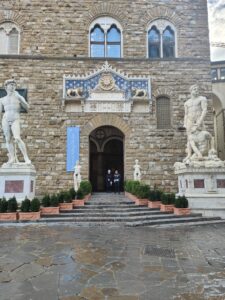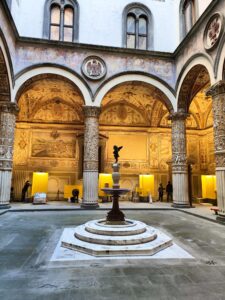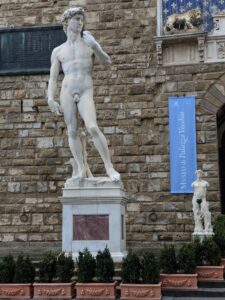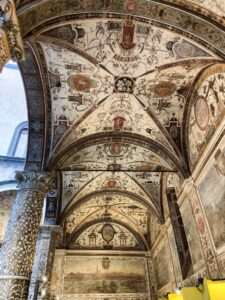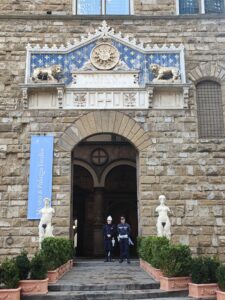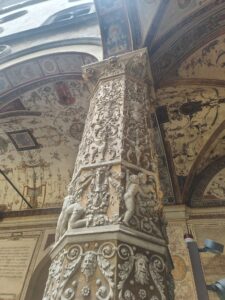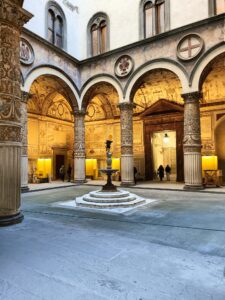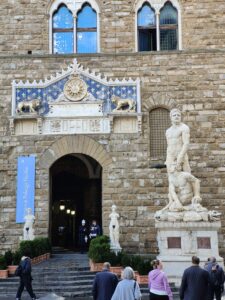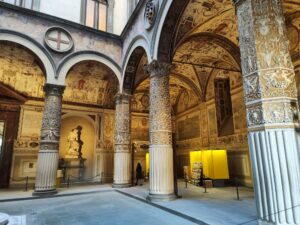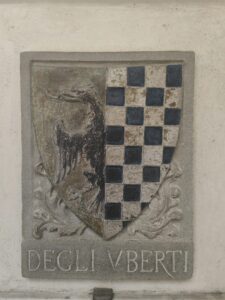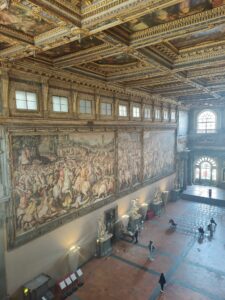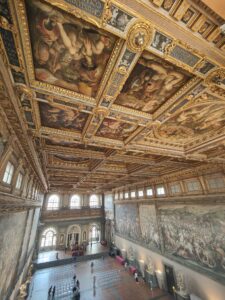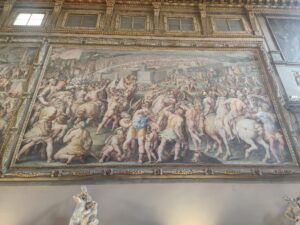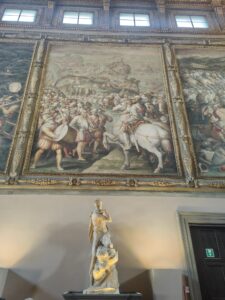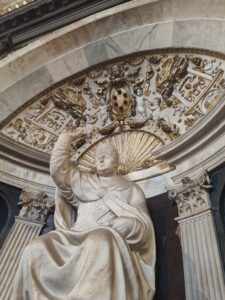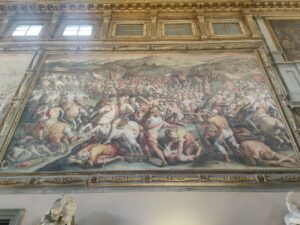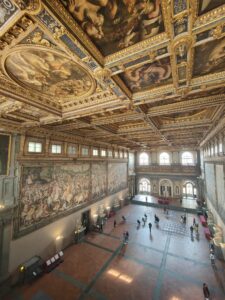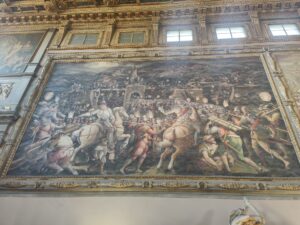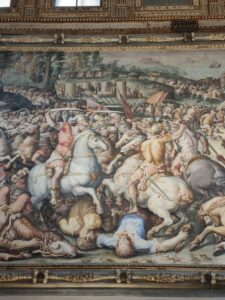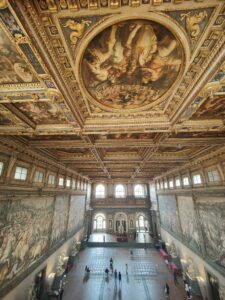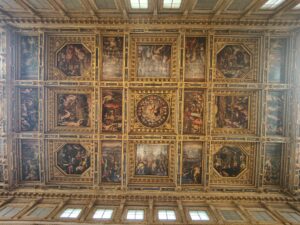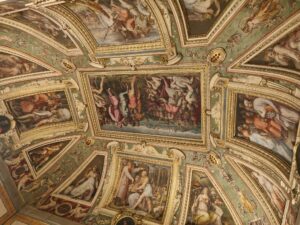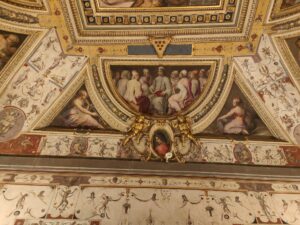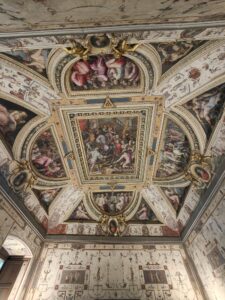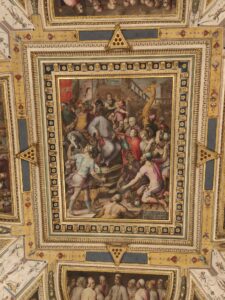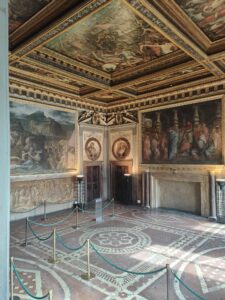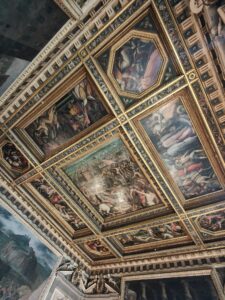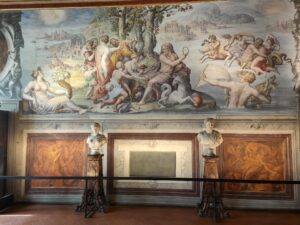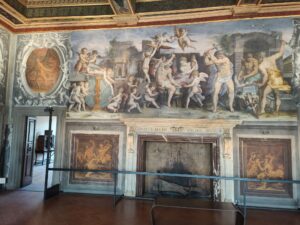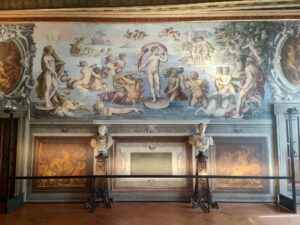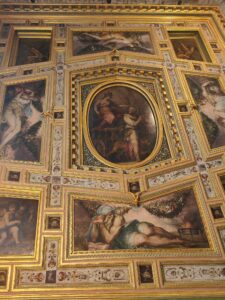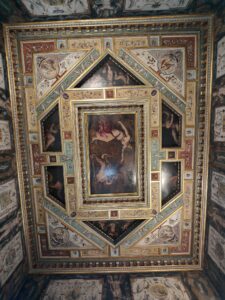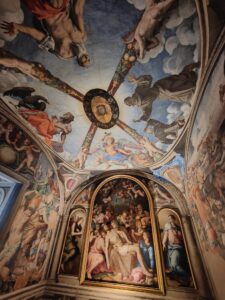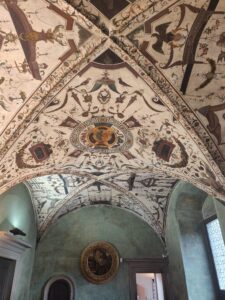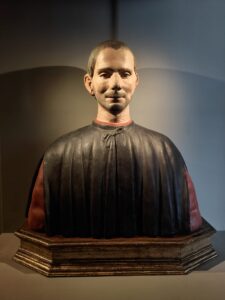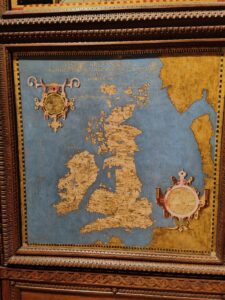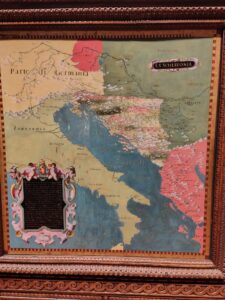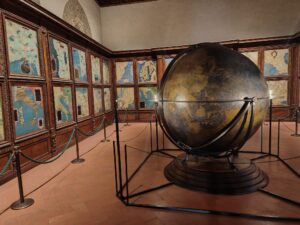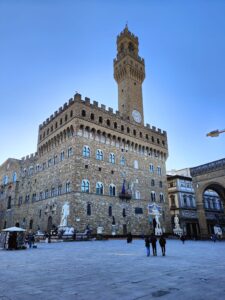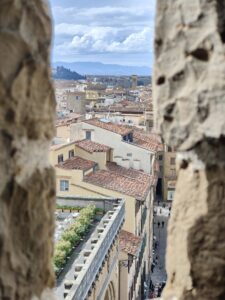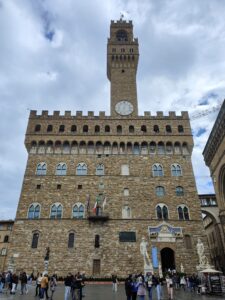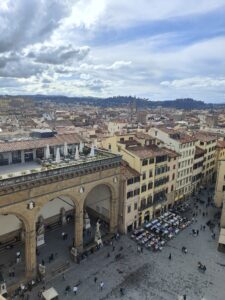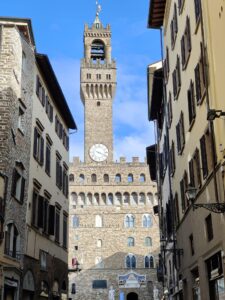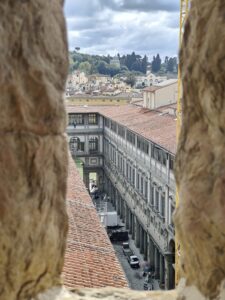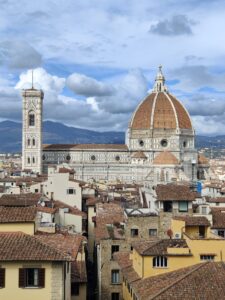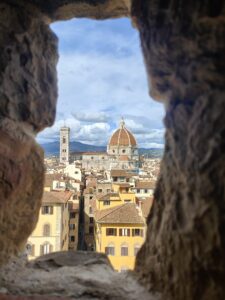The world-renowned Uffizi Gallery is home to an extensive collection of art, ancient statues and historical artefacts. Throw in names like Vasari, Leonardo, Raphael, Caravaggio, Michelangelo, and Botticelli and it is easy to see why it ranks so highly in Italy’s attractions, coming second only to the Colosseum in Rome each year.
Construction of the Uffizi Gallery was commissioned in 1560. Although the art draws you in, I’m equally fascinated by its origins and links to the Medici family. These links are perhaps unknown to many but provide a level of intrigue. Join me as I explore its origins and the vast and expansive collection of art.
Uffizi origins
I doubt many know that the Uffizi Gallery they visit today wasn’t built to display art. In 1560 the first Grand Duke of Tuscany (Cosimo I) commissioned the building of the “Uffizi”. Its original purpose was to house the administrative and judiciary offices of Florence.
My Italian lessons continue as I find out that “Uffizi” means offices. Cosimo commissioned his favourite architect (Vasari – remember the rooms in Palazzo Vecchio, the rebuild of Palazzo Pitti and the Vasari corridor) to design them.
To build these new offices, space was needed for the huge complex. Local buildings were pulled down which included the ancient and Romanesque church, San Pier Scheraggio. After Vasari’s death in 1574 the offices were completed in 1581 by architects Buontalenti and Parigi.
Cosimo also instructed that a corridor be built linking the offices and his new residence at Palazzo Pitti. In the post regarding Ponte Vecchio, I discovered that the corridor was named after the man who constructed it – the Vasari corridor.
The corridor took just 5 months to complete and was built to celebrate the marriage between Cosimo’s son Francesco to Giovanna d’Austria in 1565. When visiting the Palazzo Vecchio, you’ll discover that the courtyard behind the main entrance was refurbished by Vasari and decorated in time for their nuptials.
Francesco (Cosimo’s eldest son) was to become the next Duke of Tuscany after his father. He ruled the grand duchy from 1574 until his death in 1587. It was Francesco who decided to set up a private gallery within the Uffizi. This was to house the vastly expanding collection of statues and other precious objects belonging to the Medici family.
The location chosen was the top floor of the east wing. The main room of this private area was the octagonal room called the Tribuna, built by Bernardo Buontalenti in 1584. The stunning room is adorned with thousands of shells on the inside of the dome.
“Uffizi” a museum
Florence is so rich in art, and this is due to one person. This is because the last remaining member of the Medici family, Anna Maria Luisa de’ Medici (sister to the last male Medici Gian Gastone), signed the ‘family pact’. This was an agreement that was made with the new ruling family of Tuscany the Habsburg-Lorraine.
Anna was forward thinking; she saw the value in the art but wondered how it could attract the curiosity of foreigners. You might say she saw the future for the whole of Florence. Her stipulation in the pact was that the art and treasure collected by her family over the centuries should remain in Florence.
It was 16 years after her death that doors of the offices/gallery were opened to the public viewing under the instruction of Grand Duke Peter Leopold. So out of the original administrative offices was born the Uffizi Gallery Museum.
The Uffizi Gallery
Walking around the gallery is a breathtaking experience. I was immediately blown away by the incredible number of statues from Roman times. There are portraits of Agrippa, Nero, Antoninus Pius, Septimius Severus & Marcus Aurelius, to name a few. You could be easily confused, thinking you were in Rome and not Florence.
Whenever one visits a grand building, it is advisable to look up. The beautifully painted ceilings in the corridor of statues add to the majestic atmosphere. At the tops of the walls before the beautiful ceiling there is a fascinating collection of portraits. Some of the portraits look recognisable. Names on the portraits are in Italian. My Italian being non-existent, I would take a guess that some of the kings of England are on display.
The hordes kept piling in. Taking time to appreciate the display of paintings and statues was not easy nor, in the end, was it particularly enjoyable. I’m not sure when the best time would be to visit. I was sufficed with picking out bits of art and rooms that seemed to be ignored.
My fascination with the Medici family continued as I came across two portraits of the famous original members of the family – Cosimo the elder & Lorenzo the magnificent. Another name that has been discovered in these travels was Eleonora of Toledo. She also features in another painting.
Vasari Corridor
The Vasari corridor reopened at the end of 2024 after an 8-year closure. Access to the corridor is through the Gallery of Statues and Paintings. Tickets must be pre-purchased. To walk the corridor is a brilliant opportunity to follow the footsteps of the Medici family. Though bland internally it provides fascinating insight into history and unique viewing points of the city. It is approximately 750m long. The end of the corridor brings you out next to the Grand Gotto in the Boboli Gardens.
Uffizi Gallery Conclusions
Without doubt the Uffizi Gallery is a must see when visiting Florence. Though the rooms and corridors that house the art are impressive they are made so by the art that adorns them. A debate about the most impressive rooms in Florence would include mention of Palazzo Vecchio and Pitti Palace. Those in Uffizi may not be as high on the list.
That said, the collection of ancient statues is incredibly fascinating. It whetted the appetite to delve into Rome and Roman history.
The Cosimo and Vasari combine again to deliver a symbol of Florence. Though not their original plans I think everyone who visits fully appreciates the work.
So, the Uffizi can be put on a list of the great art museums around the world. The Vatican, the Louvre, the Rijksmuseum, the MET & the National Gallery, etc. could all lay claim to being the best art gallery. I will leave that debate for another day, or another post.
